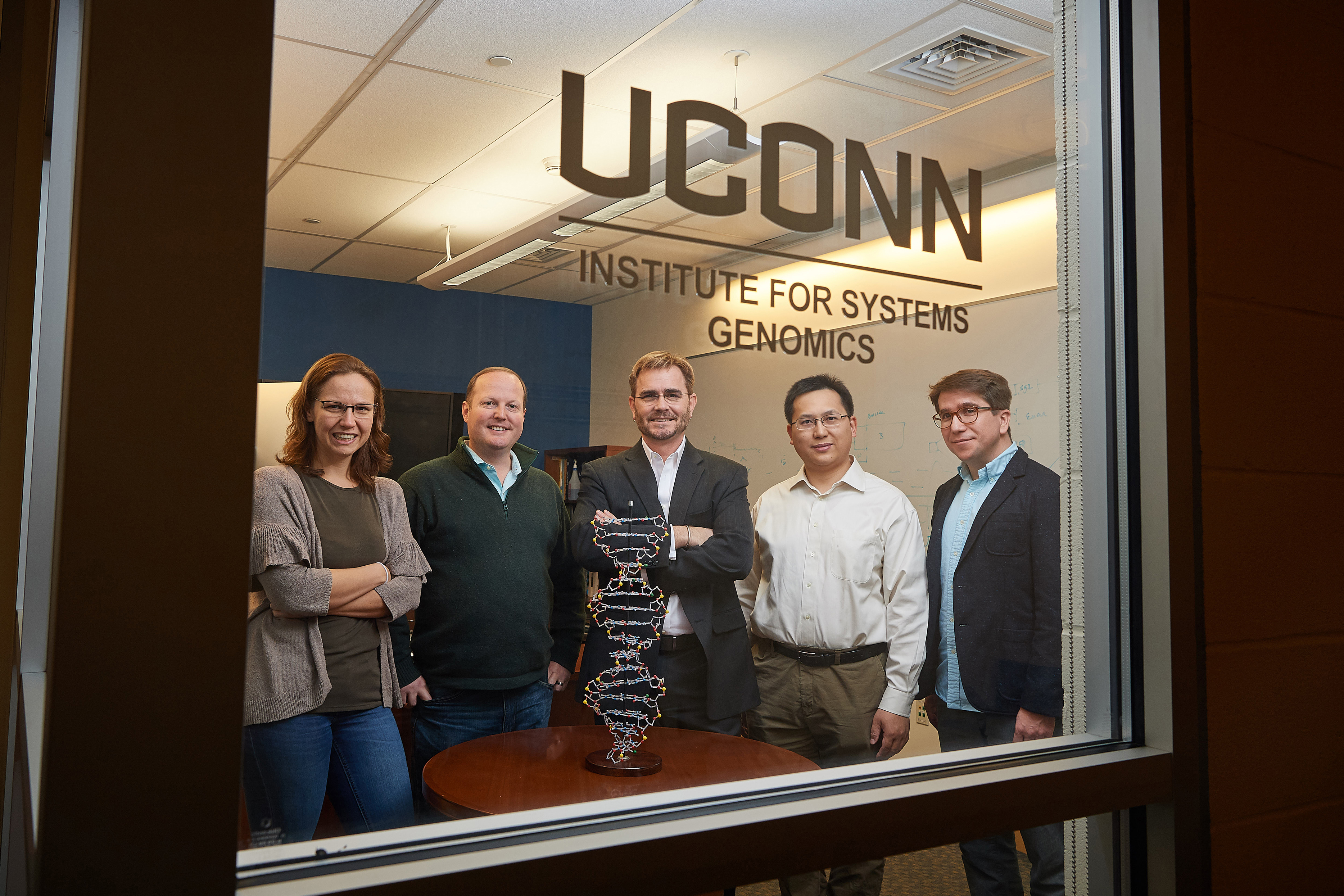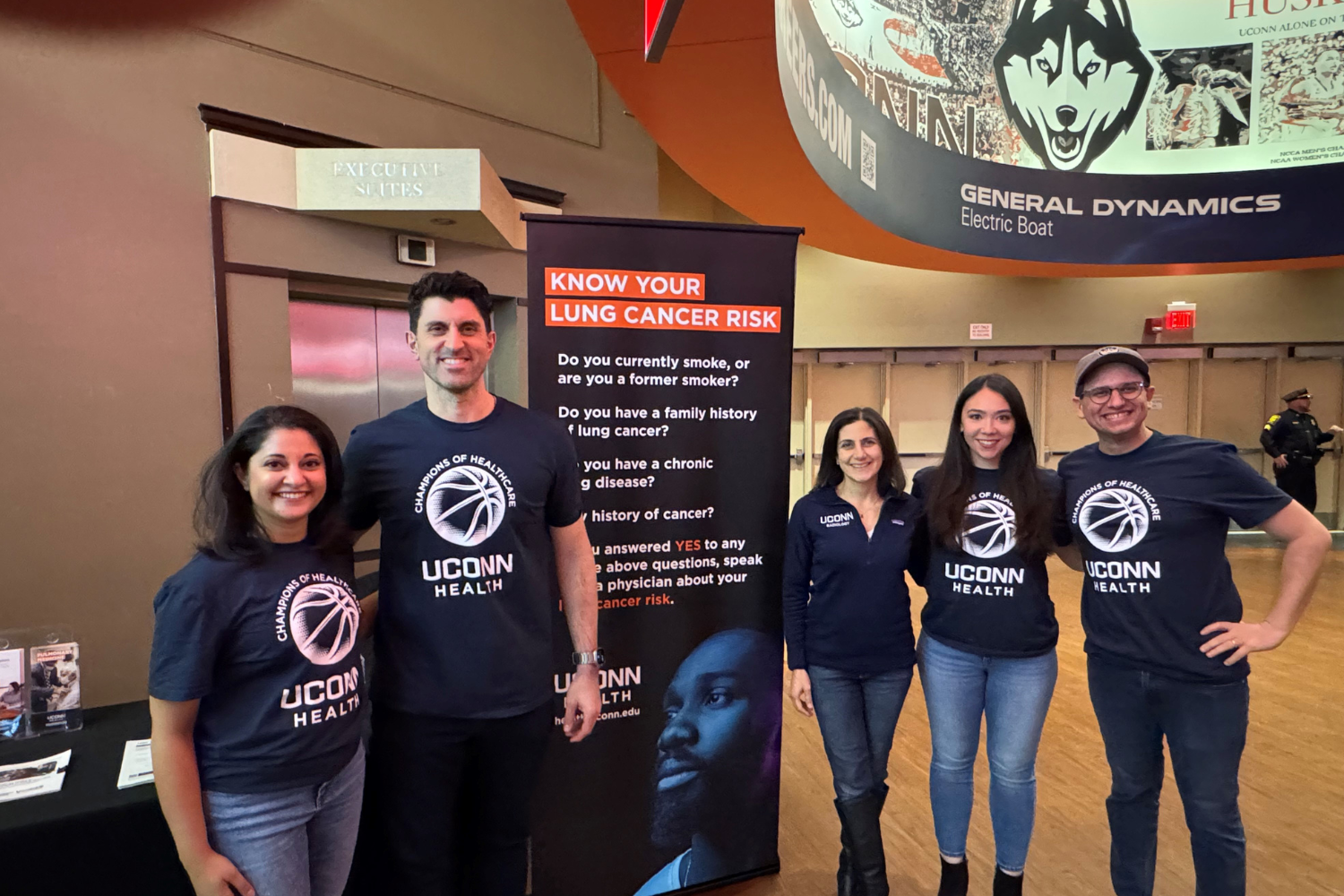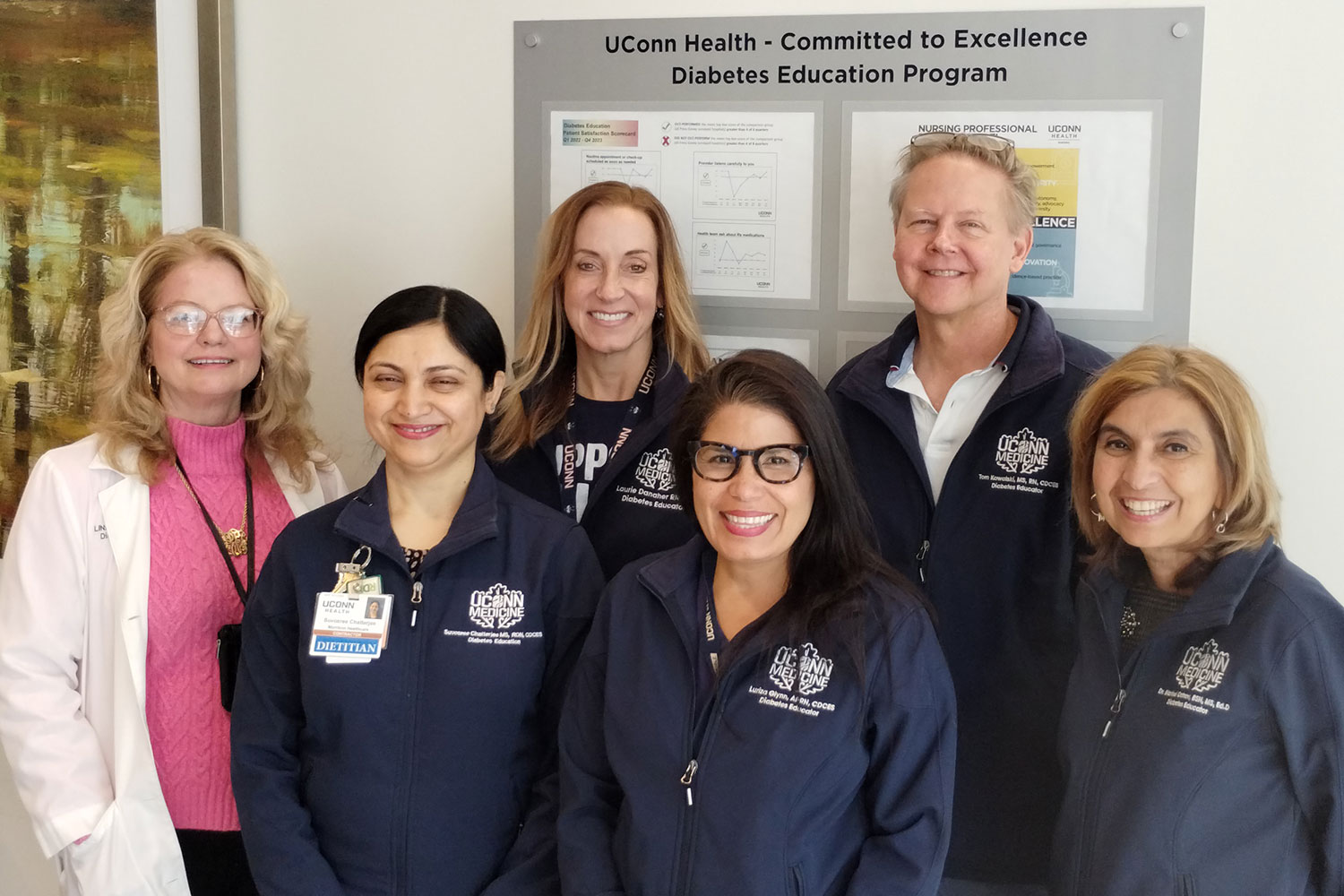Breaking news: One of the recipients of the prestigious MIRA awards just learned of another significant grant. Congratulations to Brenton Graveley, whose $9 million, 4-year award from the National Human Genome Research Institute (NHGRI) will support his work mapping the sites for all human RNA binding proteins.
Also, in summer 2018, assistant professor of molecular and cell biology Nichole Broderick received a five-year, $1.92 million grant from the National Institutes of General Medical Sciences, Maximizing Investigators’ Research Award (MIRA) program, for her research on the role of the microbiome in animal health.
As federal money for scientific research dwindles, young researchers with fertile minds but thin track records are struggling to get funded. But a new type of grant from the National Institutes of Health is trying to help. And faculty at UConn Health just won big.
The National Institute of General Medical Sciences (NIGMS) has awarded $7.5 million to five UConn Health researchers as part of the Maximizing Investigator’s Research Awards for Early Stage Investigators (MIRAs), a strategy to bring innovation and risk-taking back to basic medical research.
“The competition for this award is intense,” says Dr. Bruce Liang, dean of the UConn School of Medicine. “We are proud of our faculty members in the Department of Genetics and Genome Sciences and of our affiliated faculty at The Jackson Laboratory for Genomic Medicine who have won the NIH grants. It gives further distinction, and bodes well for exciting discoveries ahead.”
The MIRAs are an experiment, a solution to a sticky problem in medical research. As money grew tight, grant committees at the National Institutes of Health, including NIGMS, wanted to make sure they were spending it wisely. So they became more conservative, and started funding only ideas that had already shown promise. Researchers began to tailor their proposals to fit those ideas. But that led to poorer quality science and fewer big breakthroughs, and also a bias toward established scientists. Currently, a majority of the money from NIH grants, more than 50 percent, goes to just 5 percent of the researchers. Everyone recognizes the problem, but it’s hard to get out of the rut.
So NIGMS is trying a different strategy. The MIRAs are designed to let promising researchers follow the science wherever it leads, instead of forcing them to investigate a specific idea that may or may not pan out. The scientist uses the grant application as a pitch: ‘This is how I think, this is how I ask questions, these are the types of questions I like to ask.’ Essentially, they’re selling their creativity and investigative approach to the committee.
The competition for this award is intense. — Dr. Bruce Liang
The strategy paid off for UConn Health professor and interim chair of genetics and genome sciences Brenton Graveley and assistant professors of genetics and genome sciences Justin Cotney and Stefan Pinter. In addition, assistant professors Zhengqing Ouyang and Duygu Ucar, who are primarily based at JAX Genomic Medicine but also hold appointments in the Department of Genetics and Genome Sciences and mentor UConn graduate students, received MIRA awards. All won five-year grants of $250,000 per year except for Graveley, who was awarded $500,000 per year.
“Currently the field of genomics is moving at an incredibly fast pace; the technologies and experimental approaches are improving every few months,” says Cotney. “The MIRA R35 mechanism gives me the flexibility to adjust my research and utilize cutting-edge techniques as they become available.”
He adds that the MIRA grant also frees him up from paperwork: “[It] allows me to get back into the lab and work on some of the riskier projects that require more experienced hands, instead of spending the bulk of my time writing grants.”
Cotney’s research maps out how mammals control their genes during development; Pinter studies the inactive X chromosome in female cells; Graveley sequences DNA to understand how genes are used by cells; Ouyang uses computational techniques to study gene regulation; and Ucar designs innovative ways to mine genetic data for meaning.
These awards are going to lead to better science. — Rachel O'Neill
“These prestigious grants reinforce what we value in science – the ability to continually ask questions, to be creative, to challenge ourselves, and strive to keep improving,” says Charles Lee, scientific director and professor at The Jackson Laboratory for Genomic Medicine. “We couldn’t be prouder of these inspiring scientists at UConn Health and JAX as they work together to make a tangible impact on human disease.”
All five MIRA winners are also members of the Institute for Systems Genomics, an association of researchers at UConn and JAX Genomic Medicine that encourages cross-pollination of genomics-related ideas and people across departments and institutions.
“We all can look at the same data set and see something different; that’s how innovation works,” says Rachel O’Neill, director of UConn’s Institute for Systems Genomics. “MIRAs are great for that, and these awards are going to lead to better science.”



